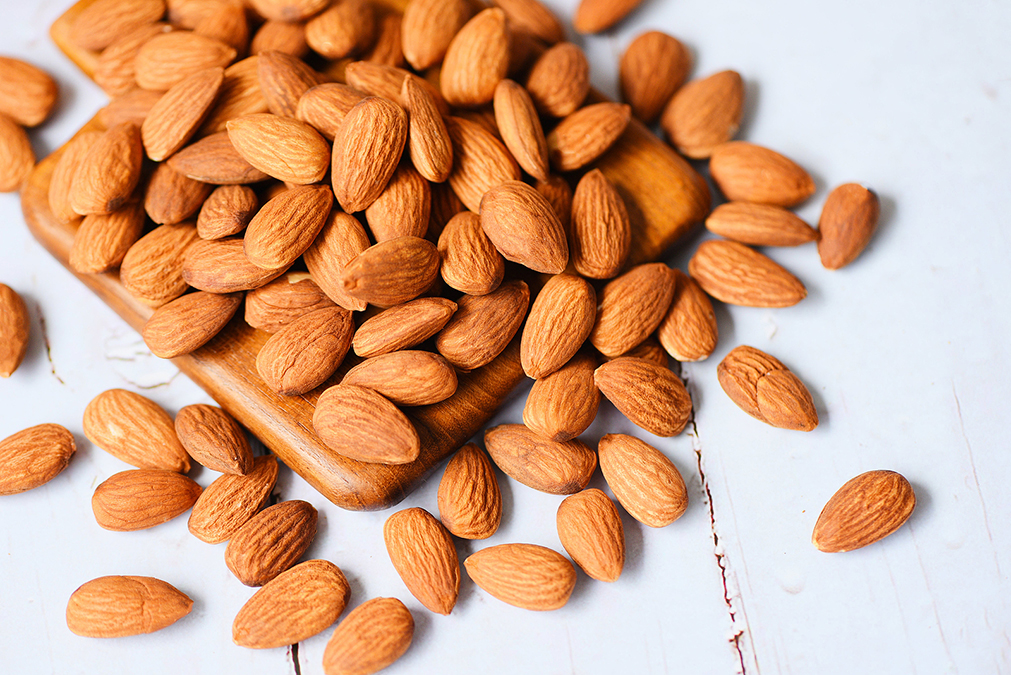 It tastes great raw, toasted, seasoned, and smoked; it can make milk, butter, oil, and flour, and it now turns out that it can benefit your cholesterol profile too.
It tastes great raw, toasted, seasoned, and smoked; it can make milk, butter, oil, and flour, and it now turns out that it can benefit your cholesterol profile too.
Researchers from Penn State University have just published a study in the Journal of Nutrition that shows how it lowers your bad cholesterol while increasing your good cholesterol.
Like that wasn’t enough, it also boosts the level of productivity at which your good cholesterol removes bad cholesterol from your bloodstream.
LDL is normally considered bad cholesterol, as it has the potential to clog your arteries. HDL, on the other hand, removes this LDL cholesterol from your body, and is therefore considered good cholesterol.
The Penn State researchers asked 24 of their 48 participants to eat a handful of almonds daily for six weeks.
The other 24 volunteers ate a similar diet for the same amount of time, but ate a banana muffin daily instead of the almonds.
After the six weeks, the scientists swapped the two groups, with the almond consumers now eating a banana muffin and vice versa.
At the beginning and end of each diet period, they measured the level and function of the 48 participants’ cholesterol.
Compared with the muffin diet, the almond diet increased HDL function by 6% and the presence of α-1 HDL by an impressive 19%.
α-1 HDL is the most important sign that your HDL cholesterol is working well to remove bad cholesterol from your body.
As HDL cholesterol particles collect LDL cholesterol from around your bloodstream to transport to your liver (from which it is processed for excretion), those HDL particles become bigger, much like a garbage bag becoming bigger as you fill it up.
The largest garbage bags, or HDL particles, are clearly the most effective at removing the garbage, or LDL cholesterol particles in this case.
α-1 HDL particles are the largest and most productive HDL particles, which is why the researchers concluded that almonds were a great tool for making your HDL cholesterol more productive.

 Overcoming IBD
Overcoming IBD Multiple Sclerosis
Multiple Sclerosis Banishing Bronchitis
Banishing Bronchitis Gum Disease Gone
Gum Disease Gone Overcoming Onychomycosis
Overcoming Onychomycosis Neuropathy No More
Neuropathy No More The Prostate Protocol
The Prostate Protocol Brain Booster
Brain Booster
 Ironbound
Ironbound
 Solution for Shingles
Solution for Shingles
 The Bone Density Solution
The Bone Density Solution
 The Ultimate Healing Protocol
The Ultimate Healing Protocol
 The Parkinson's Protocol
The Parkinson's Protocol
 The Chronic Kidney Disease Solution
The Chronic Kidney Disease Solution
 Overthrowing Anxiety
Overthrowing Anxiety The Fatty Liver Solution
The Fatty Liver Solution The Hypothyroidism Solution
The Hypothyroidism Solution
 The End of Gout
The End of Gout The Blood Pressure Program
The Blood Pressure Program
 The Oxigized Cholesterol Strategy
The Oxigized Cholesterol Strategy
 Stop Snoring And Sleep Apnea Program
Stop Snoring And Sleep Apnea Program
 The Arthritis Strategy
The Arthritis Strategy The Vertigo & Dizziness Program
The Vertigo & Dizziness Program The 3-Step Diabetes Strategy
The 3-Step Diabetes Strategy Hemorrhoids Healing Protocol
Hemorrhoids Healing Protocol The Erectile Dysfunction Master
The Erectile Dysfunction Master Weight Loss Breeze
Weight Loss Breeze The IBS Program
The IBS Program The Insomnia Program
The Insomnia Program The Migraine and Headache Program
The Migraine and Headache Program The Neck Pain Solution
The Neck Pain Solution The Menopause Solution
The Menopause Solution The Ejaculation Master
The Ejaculation Master The TMJ Solution
The TMJ Solution The Acid Reflux Solution
The Acid Reflux Solution The Fibromyalgia Solution
The Fibromyalgia Solution The Psoriasis Strategy
The Psoriasis Strategy